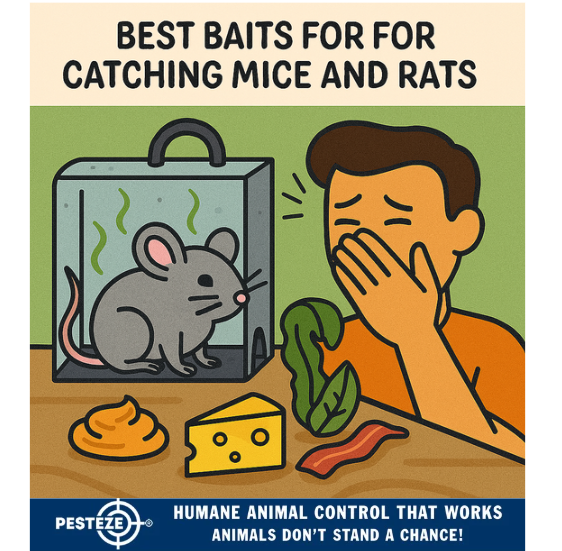BEST BAITS FOR CATCHING MICE AND RATS

BEST BAITS FOR CATCHING MICE AND RATS
SUMMARY
Choosing the right bait is essential for successful rodent control. Whether you're dealing with a few mice or a full-blown rat infestation, using effective bait can dramatically increase your chances of trapping them quickly and humanely. This guide explores the best bait options for different environments, trap types, and rodent species. From household staples to professional-grade attractants, you’ll learn what works, why it works, and how to use bait safely and strategically.
FEATURES
-
Top Bait Choices: Discover the most irresistible foods for mice and rats.
-
Species-Specific Options: Learn which baits work best for mice vs. rats.
-
Trap Compatibility: Match bait types with snap traps, live traps, and electronic traps.
-
Safe Placement Tips: Avoid baiting in areas accessible to pets or children.
-
Scent and Freshness: Understand how aroma and freshness impact bait effectiveness.
-
Avoiding Common Mistakes: Learn what not to use and how to prevent bait spoilage.
GUIDE DESCRIPTION
Effective rodent control starts with selecting the right bait. Mice and rats are opportunistic feeders, but they also have preferences based on species, environment, and availability. This guide breaks down the best bait options and how to use them for maximum trapping success.
For mice, peanut butter is a top choice due to its strong scent and sticky texture, which makes it hard for them to steal without triggering the trap. Other effective options include chocolate, oats, and soft cheeses. Rats, being larger and more cautious, respond well to protein-rich baits like bacon, canned meat, and nuts. Fruits like bananas and dried apricots can also be effective, especially in warmer climates.
When baiting traps, consider the type of trap you're using. Snap traps work well with sticky baits that require nibbling, while live traps benefit from bulkier items that lure rodents inside. Electronic traps should be baited with minimal mess to avoid damaging the device.
Always place bait in areas where rodents travel—along walls, behind appliances, and near food sources. Avoid placing bait where pets or children can access it. Use gloves when handling bait to prevent transferring human scent, which can deter rodents.
Freshness matters. Replace bait regularly to maintain its appeal, and avoid using spoiled or moldy food. Steer clear of baiting with items like soap, pet food, or raw vegetables, which are less attractive and may spoil quickly.
By understanding rodent behavior and bait preferences, you’ll improve your trapping success and reduce infestations faster. Smart baiting is the key to safe, effective, and humane rodent control.
- Amy Chang


Comments 0